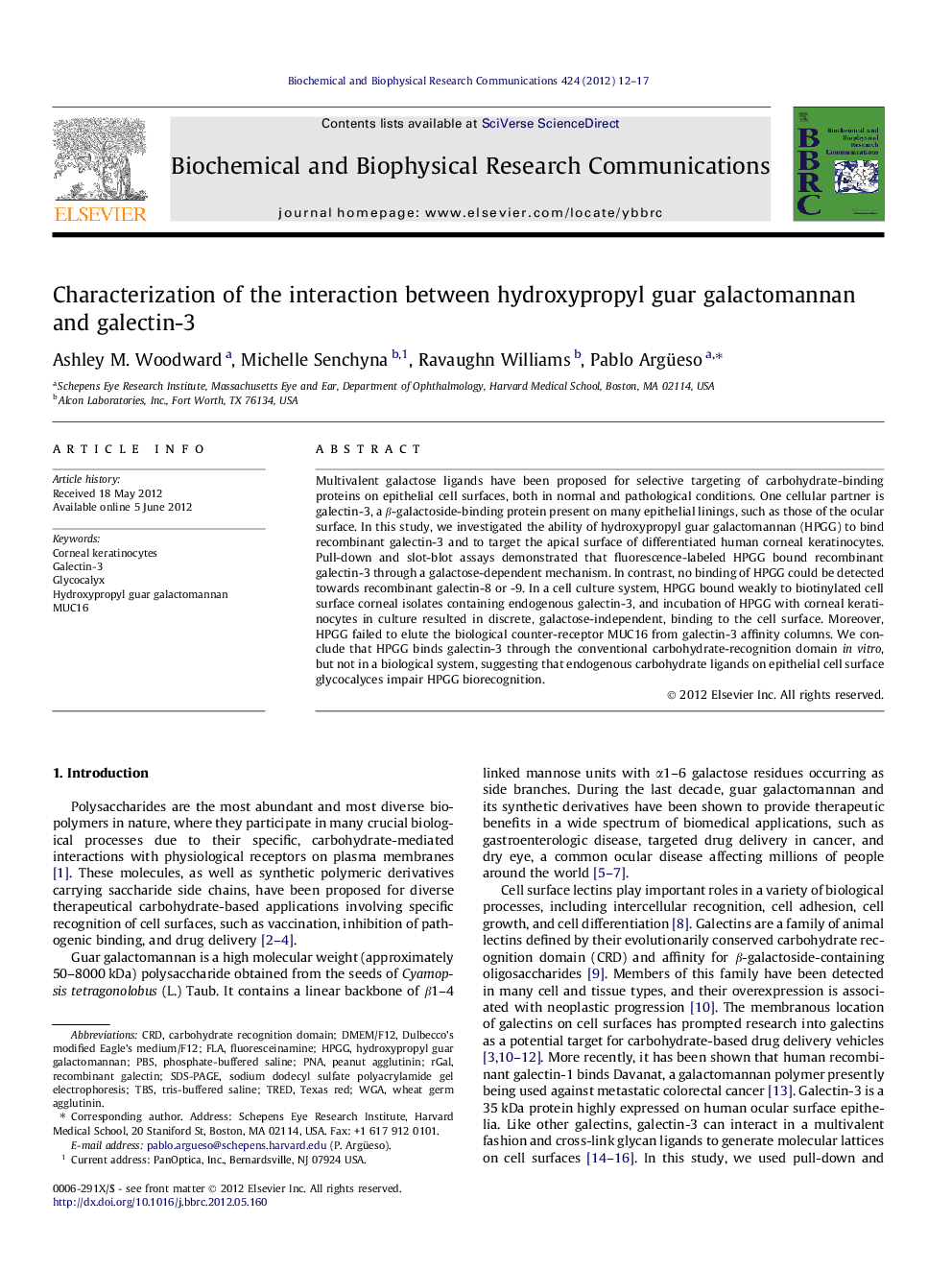| Article ID | Journal | Published Year | Pages | File Type |
|---|---|---|---|---|
| 1929359 | Biochemical and Biophysical Research Communications | 2012 | 6 Pages |
Multivalent galactose ligands have been proposed for selective targeting of carbohydrate-binding proteins on epithelial cell surfaces, both in normal and pathological conditions. One cellular partner is galectin-3, a β-galactoside-binding protein present on many epithelial linings, such as those of the ocular surface. In this study, we investigated the ability of hydroxypropyl guar galactomannan (HPGG) to bind recombinant galectin-3 and to target the apical surface of differentiated human corneal keratinocytes. Pull-down and slot-blot assays demonstrated that fluorescence-labeled HPGG bound recombinant galectin-3 through a galactose-dependent mechanism. In contrast, no binding of HPGG could be detected towards recombinant galectin-8 or -9. In a cell culture system, HPGG bound weakly to biotinylated cell surface corneal isolates containing endogenous galectin-3, and incubation of HPGG with corneal keratinocytes in culture resulted in discrete, galactose-independent, binding to the cell surface. Moreover, HPGG failed to elute the biological counter-receptor MUC16 from galectin-3 affinity columns. We conclude that HPGG binds galectin-3 through the conventional carbohydrate-recognition domain in vitro, but not in a biological system, suggesting that endogenous carbohydrate ligands on epithelial cell surface glycocalyces impair HPGG biorecognition.
► HPGG provides therapeutic benefits in a wide spectrum of biomedical applications. ► Galectin-3 is a galactose-binding protein on the surface of corneal keratinocytes. ► HPGG bound galectin-3 but not galectin-8 or -9 in vitro. ► HPGG binds weakly to the glycocalyx of human corneal keratinocytes. ► Endogenous carbohydrate ligands impair HPGG biorecognition.
